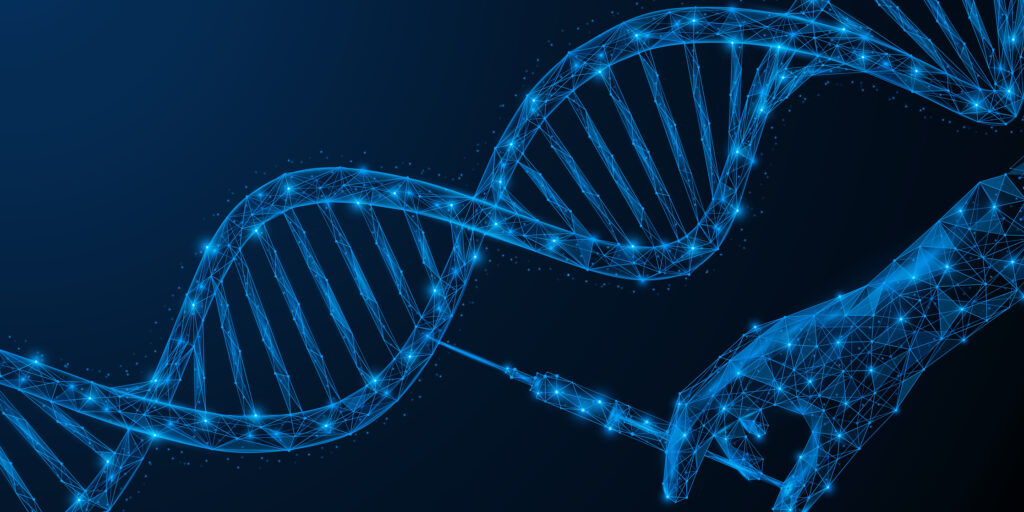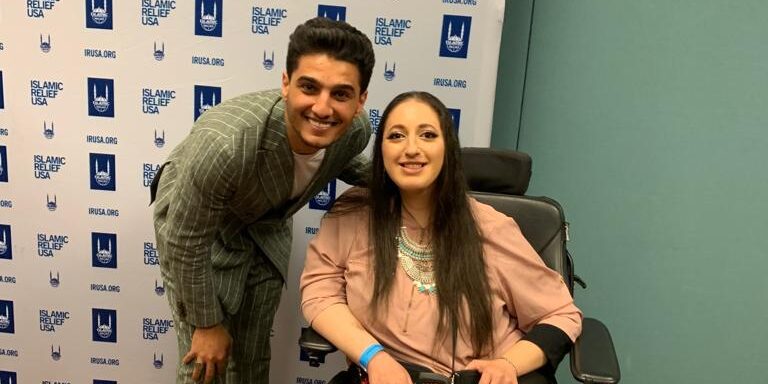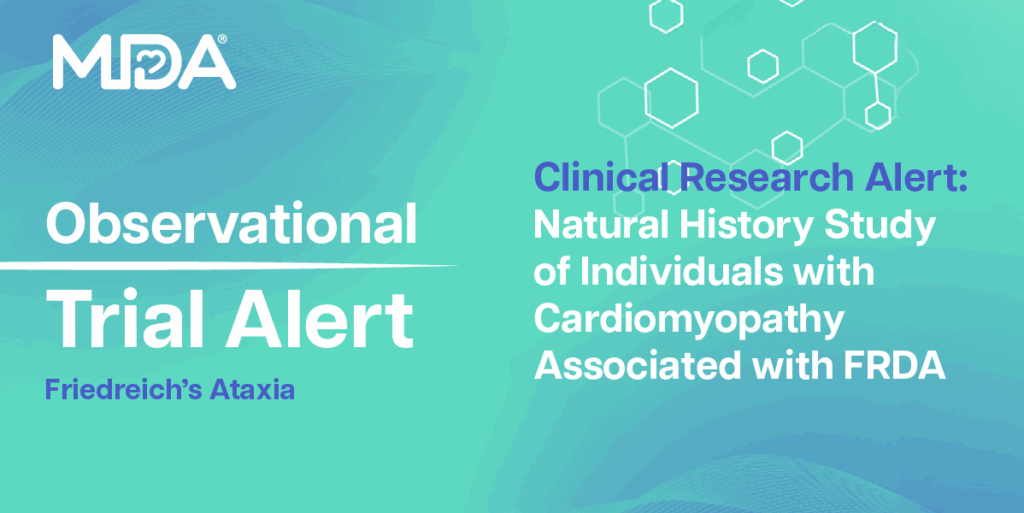
Simply Stated: Therapeutic Strategies to Treat DMD
By Sujatha Gurunathan | Tuesday, November 26, 2024
5 Second Summary
“Simply Stated” is a Quest column designed to explain some terms and basic facts about neuromuscular diseases.
Find more at Mdaquest.org/tag/simply-stated
Duchenne muscular dystrophy (DMD) is a rare genetic disorder caused by mutations in the dystrophin gene that lead to loss of the dystrophin protein. People with DMD experience progressive degeneration and weakness of the body’s voluntary muscles, primarily the skeletal muscles that control movement. In later stages of disease, the heart and respiratory muscles may also be affected, leading to life-threatening complications. DMD primarily affects males and occurs in approximately 1 in 3,500 to 5,000 male births.
Though there are currently no therapies that can reverse the muscle degeneration caused by DMD, approved therapies have enabled improvements in muscle function and quality of life. Research efforts to restore or replace dystrophin have taken center stage, leading to approvals of gene therapy and exon skipping therapies, which work by increasing dystrophin levels in the body. Alternative therapeutic strategies that do not rely on modulating dystrophin levels are also under active investigation to treat DMD and have also led to several therapy approvals.
The causes and effects of DMD
DMD is caused by mutations of the dystrophin (DMD) gene. The DMD gene instructs the production of dystrophin, a protein that is essential for keeping muscle cells intact. Dystrophin works, in part, like a shock-absorber, preventing muscle cell membranes from becoming damaged when muscles contract and relax. Dystrophin also holds other important proteins in place at the muscle cell membrane, helping to preserve the structure and function of muscle cells. In people with DMD, mutations in the DMD gene result in little or no production of the dystrophin protein.
The lack of dystrophin in people with DMD starts a cascade of events that ends with muscle damage and degeneration. First, the lack of dystrophin causes the breakdown of muscle cell membranes, enabling calcium ions to enter the cells and signal for cell death (necrosis). The death of muscle cells, in turn, triggers damaging inflammation in the muscles. For a time, the body is able to repair and regenerate the damaged muscles. Eventually, however, the ability of the muscles to regenerate decreases and the muscle tissues are replaced by other types of tissue (connective and fat tissue) in a process known as fibrosis or scarring.
Among other effects, DMD almost always lead to a type of heart disease known as DMD-associated cardiomyopathy in affected people. This condition is caused by weakening of the heart muscles, which prevents the heart from pumping blood efficiently and can result in irregular heartbeats (arrhythmias) and heart failure. DMD-associated cardiomyopathy can worsen rapidly and become fatal.
Understanding of the processes involved in DMD has prompted development of targeted strategies to treat the disease. Researchers are testing therapeutics to restore or replace dystrophin, regulate the balance of calcium, target the inflammation that occurs in damaged muscles, boost regenerative capability of muscle cells, prevent fibrosis, and improve the function of heart muscle.
Approved therapies for DMD management
Current management of DMD includes the use of various therapeutics. Corticosteroids, such as prednisone, are commonly prescribed to people with DMD to slow the progression of muscle weakness and delay the loss of ambulation (walking ability). Additionally, a number of drugs have been approved by the US Food and Drug Administration (FDA) to treat DMD over the last decade. These include:
Therapies that increase dystrophin levels
Gene therapies for DMD use a viral vector to introduce a modified dystrophin gene into cells, leading to production of micro-dystrophin, a shortened dystrophin protein that can restore dystrophin functions in people with DMD.
- Elevidys(delandistrogene moxeparvovec) (Sarepta Therapeutics) – First gene therapy approved for DMD. Elevidys is a single-dose adeno-associated virus (AAV)-based gene therapy indicated for the treatment of patients 4 years or older with a confirmed mutation in the DMD
Exon skipping therapies
These drugs promote skipping over a section of genetic code (known as an “exon”) to avoid the DMD gene mutation, allowing the body to produce a truncated, but functional dystrophin protein.
- Amondys 45(casimersen) Injection (Sarepta Therapeutics) – A therapy made of bits of genetic material, known as an antisense oligonucleotide (ASO), for treatment of patients with DMD who have genetic mutations in the DMD gene amenable to skipping exon 45.
- Viltepso(viltolarsen) Injection (NS Pharma, Inc.) – An ASO indicated for the treatment of patients with DMD who have genetic mutations in the DMD gene amenable to skipping exon 53.
- Vyondys 53(golodirsen) Injection (Sarepta Therapeutics) – An ASO indicated for the treatment of patients with DMD who have genetic mutations in the DMD gene amenable to skipping exon 53.
- Exondys 51(eteplirsen) Injection (Sarepta Therapeutics) – An ASO indicated for the treatment of patients with DMD who have genetic mutations in the DMD gene amenable to skipping exon 51.
Therapies that inhibit inflammation
- Agamree (vamorolone) (Santhera Pharmaceuticals) – A synthetic steroid, which appears to cause fewer side effects than corticosteroid therapies, and is approved for the treatment of DMD in patients 2 years of age and older.
- Emflaza(deflazacort) Tablets and Oral Suspension (PTC Therapeutics, Inc.) – A corticosteroid indicated for treatment of DMD in patients 2 years of age and older. Deflazacort is a derivative of prednisone.
Therapies that promote muscle growth and regeneration
- Duvyzat(givinostat) Oral Suspension (Italfarmaco Group) – A histone deacetylase (HDAC) enzyme inhibitor approved for the treatment of DMD in patients 6 years of age and older. By inhibiting HDACs, Duvyzat slows DMD disease progression, increases muscle mass and reduces improper death of muscle tissue (necrosis).
To learn more about therapies available to people with DMD, speak with your doctor or contact the MDA Resource Center.
Despite the availability of approved treatments for DMD, there are still unmet needs. More efficacious therapies would improve the life of people with DMD, and curative therapies have not yet been achieved. Various strategies are being investigated, preclinically and clinically, in the effort to develop new therapeutics for DMD. Research advances and the promise of better therapeutics on the horizon offer hope for people living with DMD.
MDA’s Resource Center provides support, guidance, and resources for patients and families, including information about Duchenne muscular dystrophy (DMD), open clinical trials, and other services. Contact the MDA Resource Center at 1-833-ASK-MDA1 or ResourceCenter@mdausa.org.
Next Steps and Useful Resources
- For more information about the Duchenne Muscular Dystrophy (DMD), an in-depth review can be found here.
- For a comprehensive look at current clinical trials for exon-skipping therapies for DMD, read Simply Stated: Updates in Exon Skipping Technology on Quest Media.
- Explore ongoing and enrolling clinical trials at mda.org/clinical-trials or ClinicalTrials.gov.
- Learn more about Duchenne muscular dystrophy in DMD FAQs. Find more resources on MDA’s Education Materials webpage.
- MDA’s Resource Center provides support, guidance, and resources for patients and families, including information about exon skipping therapies, open clinical trials, and other services. Contact the MDA Resource Center at 1-833-ASK-MDA1 or ResourceCenter@mdausa.org.
- To learn about the early development of exon skipping therapies, visit the Quest blog post Once a Wild Idea, Successful First-Generation Exon-Skipping Therapies Pave the Way for Personalized Treatments.
- Stay up-to-date on Quest content! Subscribe to Quest Magazine and Newsletter.
TAGS: Simply Stated
TYPE: Blog Post
Disclaimer: No content on this site should ever be used as a substitute for direct medical advice from your doctor or other qualified clinician.




